2nd Dan Thesis Patterns and Change
The Evolution of T’oi-Gye
퇴계
By: Alan Joffray 1st Dan
Test Date: 7 July 2014
Much has been written about the changes in the patterns over the years, as a matter of fact a person can drive oneself crazy trying to understand and keep up with all the variations and changes that have happened.
This paper is not so much about who is right and who is wrong, but simply about how this martial art, which in turn could be any martial art, evolves and changes over time. Whether it changes because of political reasons, development of techniques, or just the fact that people find better ways of doing something. Some of the examples that I will use are widely known so I won’t go into great detail, some are subtle and are only known by a lucky few.
Chang Hon patterns were developed by Choi, Hong Hi AND HIS BLACK BELTS over a period of several years, as time has gone by many small changes have been taught due to the fact that it is an ever evolving martial art. Even the number of patterns has increased and changed. In the 1965 edition of Taekwon-Do: The Art of Self-Defence there are only 20 patterns, included in that group is Ko-Dang (Choi, 1965). Since the beginning Choi, Hong Hi used the patterns not only to teach technique, form, and function, but also to teach Korean history. It wasn’t until the first publication of the text book Taekwon-Do: The Korean Art of Self Defence instead? that there were 24 patterns and the meaning of 24 in relation of man’s life to the earth (Choi, 1972). The other aspects of change have also included a change possibly in technique, or the execution related to that technique. Influences by various Masters and Instructors have also shaped how well a pattern works.
In this paper, I will use T’oi-Gye to hopefully demonstrate how change has made this pattern not only more functional, but also better. There will be three (3) distinct areas of discussion.
- Change in technique.
- Execution of technique.
- Influence of instructor.
T’oi-Gye
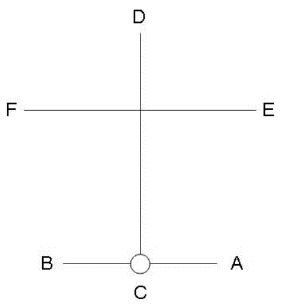
T’oi-Gye is the pen name of the noted scholar Yi Hwang (16th C.A.D.), an authority on neo-Confucianism. The 37 movements of the pattern refer to his birthplace on 37degrees latitude, the diagram represents “scholar”.
The first notable change in technique and execution are in moves 3 & 6
These moves have had significant change in the arm positioning for the right back fist, which was originally a block (Choi, 1965; 1975), later it was changed to a strike (Choi, 1980) with the back fist, then the lower block was changed to a side downward (Choi, n.d.). Also, it was changed from regular motion to slow motion.
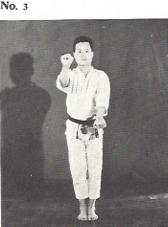
1965
1965 (Choi) – Bring L foot to R foot forming C stance toward D while executing HS block with RO forearm and a LS block with L forearm.
1975 (Choi) – Bring the left foot to the right foot forming a close stance toward D while executing a high block with right outer forearm and low block with the left forearm. Perform in slow motion.

1980
1980 (Choi) – Bring the left foot to the right foot forming a close stance toward D, while executing a high strike to A with a right back fist and a low block with the left forearm. Perform in a slow motion.

Encyclopedia – 1999
Encyclopedia / 1999 (Choi) – Bring left foot to the right foot to form a close stance toward D while executing a side back strike to C with the right back fist, extending the left arm to the side downward. Perform in a slow motion.
In the early 1965 versions of the patterns there is no mention of the difference between Fast Motion and Continuous Motion. As time went on, teaching the execution of techniques needed to be more precise and thus Continuous Motion was introduced. Moves 7 & 8 became Continuous Motion, executing two (2) techniques with one breath.
1965
7. Move L. foot to “D” forming L.F. stance at the same time execute pressing block with X fist.
8. Execute H.S. vertical punch with twin fist.
*Execute 7 & 8 in a fast motion.
1975/1980
7. Move the left foot to D forming a left walking stance, at the same time executing a pressing block with an X fist.
8. Execute a high vertical punch with a twin fist.
Perform 7 and 8 in a continuous motion.
Move 12 had a minor change in execution due to a more precise description in bringing the elbows to the hips. Much later, 1999 (Choi) the move became a completely different technique.
1965
12. Bring L. foot to R. foot form C stance toward ‘F’ while bringing both fists to the hips respectively.
* Perform in a slow motion.
1975/1980
12. Bring the left foot to the right foot forming a close stance toward F, at the same time bringing both fists to the hips simultaneously. Perform in a slow motion.
1999
12. Bring the left foot to the right foot forming a closed stance toward F while executing a full facing twin side elbow thrust. Perform in a slow motion.
Again you have a dramatic change in the technique.
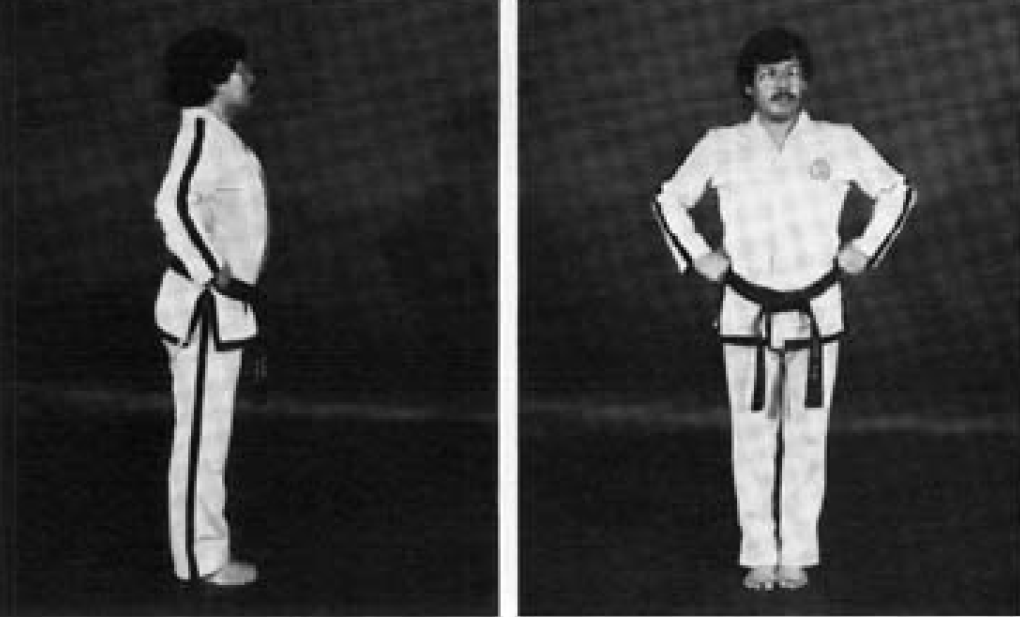
Here is an example of the influence of the instructor.
The following is the way it was taught to my instructor Senior Master Gwen F. Hall by her instructor Master Eun, Sang Ki, Kang Moo Kwan in the early 1970’s.
12. Bring L. foot to R. foot form C stance toward ‘F’ raise onto the balls of your feet and lower your heels to the floor while bringing both fists to the hips respectively. (This helps promote balance and control.) Perform in slow motion.
Moves 13 through 18
While all 6 moves are the same W-shaped block with a stamping motion, again there was a change in the technique by Master Eun.
Instead of just making a stamping motion when setting down the rising leg you make a quick outside to inside sweeping motion when you raise the leg and turn, then as you are putting it down you strike the opponent with your heel knife edge (Hall, 2014a).
To Master Eun this made more sense than just stamping your foot on the ground (Hall, 2014a). His theory on this was the hard stamping of the foot promoted foot and knee injury. Plus it actually throws you slightly off balance, you have a tendency to lean in the direction of the stamping foot. Also you lose the advantage of the hip twist thus losing a lot of the reaction force.
Move 19
Here is an example of teaching styles and what makes sense to an individual instructor.
19. Bring R. foot to L. foot and then move left foot to ‘D’ forming R.B. stance at the time executing a low pushing block.
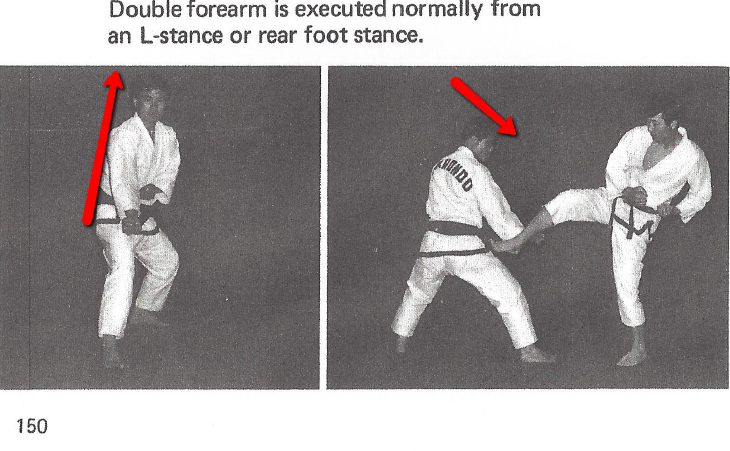
Master Eun felt that this technique did not make good sense, first because you are having to bring forward the rear arm thus bringing the rear shoulder forward which in turn makes you lean over, at the same time you are dropping your head forward in the opponents attacking area (Hall, 2014a). It also puts undo pressure on the inside of the rear knee. Basically, it is an un-natural twist of the body. In my humble opinion, I believe he is correct in the body mechanics, what brought this to my personal attention is the fact that this technique is very painful in my right knee, due to a previous injury and surgery. Keep in mind that Master Euns teachings were in the early 1970’s when he and many others first joined the International Taekwon-Do Federation (ITF). His teachings were quite logical, you execute a middle section helping helping? block instead, if you need to go low, you simply drop the arm to block. Also, it leads into the next move much easier, which is to reach up and grab. This technique was eventually corrected many years later in the 1999 (Choi) edition it states.
19. Bring the right foot to the left foot and then move the left foot to D forming a right L – stance toward D while executing a half facing low pushing block to D with the left double forearm.
By making it half facing it eliminated the fact that you were twisting around, stopped the leaning forward, and took the pressure off the rear knee.
Moves 27 & 28
While these two moves have not changed over the years, the one thing that Master Eun did was put in a smooth transition between the two.
27. Lower right foot to C forming a right walking stance, at the same time executing a high thrust with a right flat fingertip.
Transition; While still in the right walking stance draw back the right arm and make a low thrust to the groin, grab the goodies and yank back into Move 28 in a continuous motion.
It’s like adding move 2 in between 27 and 28.
28. Move the right foot to D forming a right L-stance at the same time executing a high strike to C with a right back fist and a low block with the left forearm.
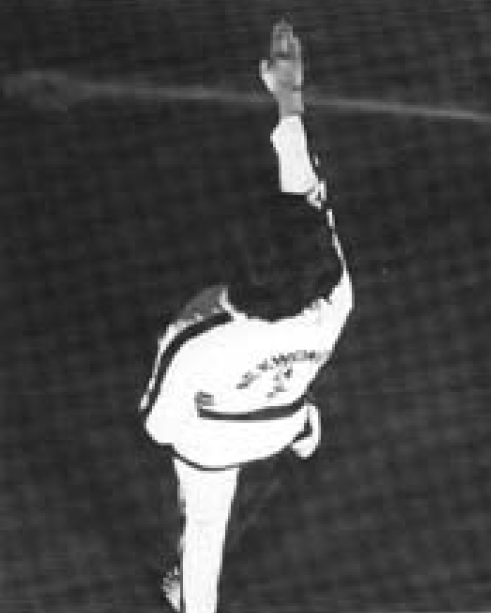
Move 27
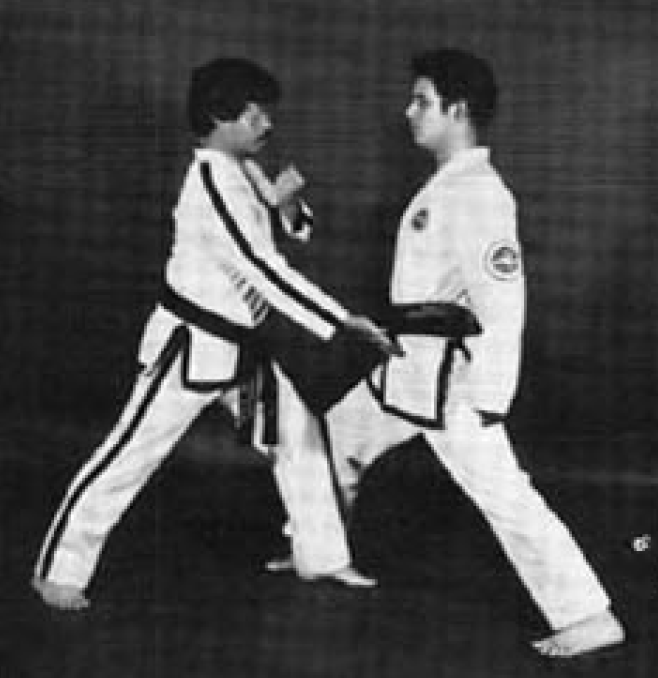
Transition (Please note the feet would be reversed and it would be an obverse thrust)
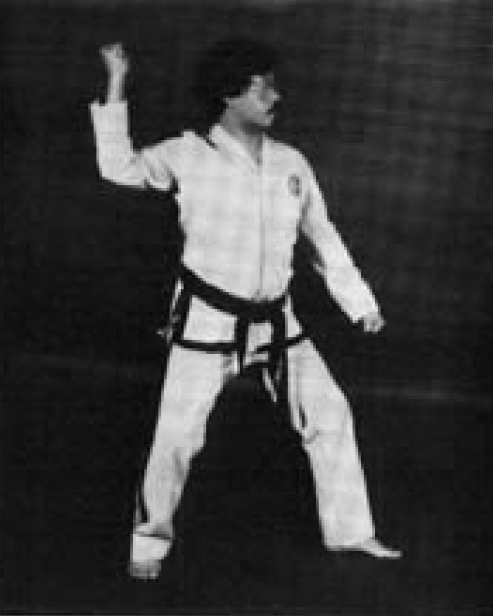
Move 28
Moves 32, 34, 35, & 36
Execution of the circular block, this technique has not changed through time. What has changed is the facing position. It was never clarified in the early editions even in the Encyclopedia it seemed to have the Martial Artist facing either B or A.
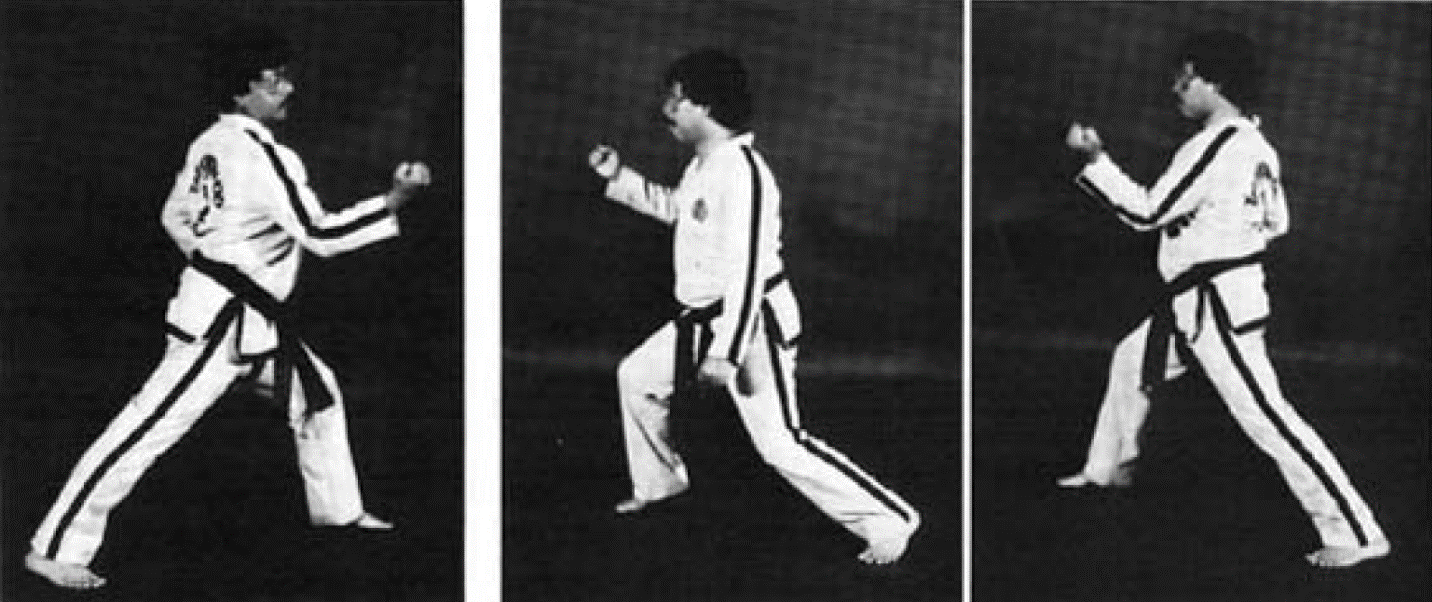
It wasn’t until the much later 1999 (Choi) edition that it gave more detail.
32. “ half facing circular block to BD”
34. “ half facing circular block to AD”
35. “ half facing circular block to CE”
36. “ half facing circular block to AD”
Interesting point here, half facing is the way it was taught to Master Hall by her Instructor Master Eun back in the early 1970’s!
The last note of importance comes from General Choi himself which applies to any pattern not just T’oi-Gye as commented to the students of Master Eun in Rockford, IL. USA in December, 1972, the very first time they were testing for their rankings in the ITF. He stated in effect, “If you do a pattern correctly it will completely tire you, using all of your energy, you will be out of breath” (Hall, 2014b). This comment has not changed over time, nor should it.
Summation
Neo-Confucianism is a social and ethical philosophy using metaphysical ideas, some borrowed from Taoism, as its framework. The philosophy can be characterized as humanistic and rationalistic, with the belief that the universe could be understood through human reason, and that it was up to humanity to create a harmonious relationship between the universe and the individual (Craig, 1998). The same could be said for the evolution of this pattern, there was much rational thought put into the techniques and their execution. I think General Choi chose this pattern’s historical namesake wisely.
Pil Sung
Alan Joffray 1st Dan GFH (9)B-04
Hall Tae Kwon-Do Association
References
Choi, Hong Hi. (1965). Taekwon-Do: The Art of self-defence.
Choi, Hong Hi. (1972). Taekwon-Do: The Art of self-defence. (1st ed.).
Choi, Hong Hi. (1975). Taekwon-Do: The Art of self-defence. (2nd ed.).
Choi, Hong Hi. (1980). Taekwon-Do: The Art of self-defence. (4th ed. Reprint).
Choi, Hong Hi. (1999). Taekwon-Do: The Art of self-defence. (5th ed.)
Choi, Hong Hi. (n.d.). The Encyclopedia of Taekwon-Do. (15 volume set).
Craig, Edward (1998), Routledge Encyclopedia of Philosophy, Volume 7, Taylor & Francis.
Hall, Gwen F. (2014a). Oral History of Taekwon-Do Interview Regarding Master Eun, Sang Ki.
Hall, Gwen F. (2014b). Oral History of Taekwon-Do Interview Regarding General Choi, Hong Hi.
![]()
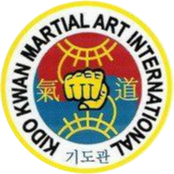
Average Rating